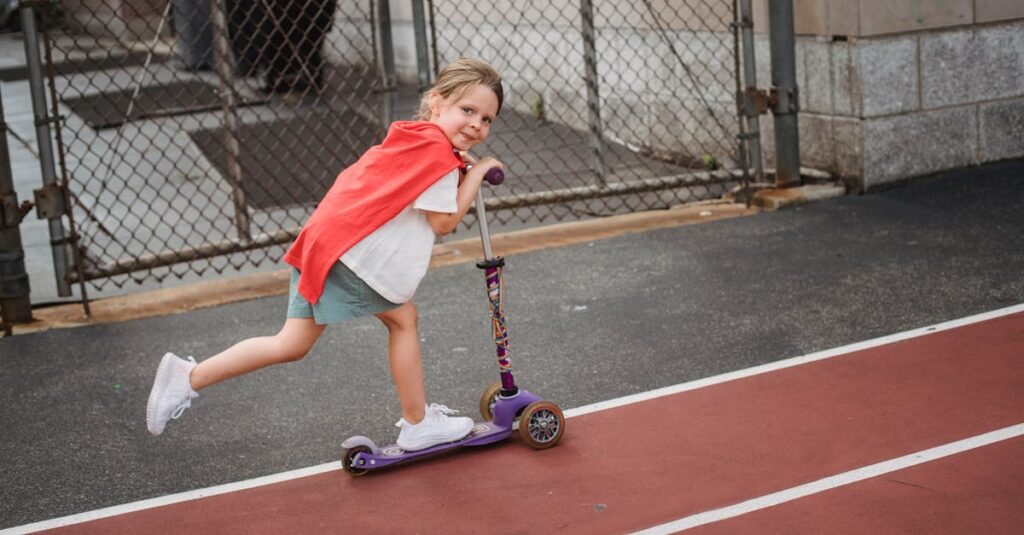Understanding Teasing in Preschool: A Primer
Teasing among preschoolers might seem harmless, but it can leave emotional impacts. Kids at this age are learning social skills and often test boundaries through teasing. However, it’s crucial to understand that what may appear as innocent banter can deeply affect sensitive young hearts.
Parents need to recognize signs of hurt, such as:
- Reluctance to go to playdates
- Sudden sadness
By acknowledging teasing’s role in preschool dynamics, parents can better guide their children through this jungle-gym of emotions. Remember, it’s perfectly normal for kids to tease each other as they learn about their world. Let’s equip them to handle it thoughtfully.
When Words Sting: Emotional Challenges for Little Ones
Children often don’t have the vocabulary or emotions sorted yet, so teasing can be hurtful. When words sting, children may struggle to express what they feel. At an age where they are sensitive to how others perceive them, teasing can amplify feelings of inadequacy or sadness.
It’s our job as parents to interpret their emotions and offer a comforting shoulder. Creating a safe space for preschoolers to share their experiences is essential. Always keep your ‘parental radar’ on high alert for subtle changes in your child’s behavior — sometimes laughter on the outside masks tears on the inside.
Why Teaching Forgiveness Matters
Teaching forgiveness is like building a muscle: the more you practice, the stronger it gets. When preschoolers learn forgiveness, they’re not just moving past a boo-boo; they’re building resilience and empathy.
It helps them to understand that everyone makes mistakes, and it’s okay to falter as you grow. Instilling forgiveness prepares children for healthier interactions and relationships in the future. You’re essentially teaching them to be superheroes in their own lives, armed with love and understanding instead of negativity!
So rather than just settling scores, your little ones learn the art of letting go.
Practical Steps to Foster Forgiveness
Consider these steps to teach forgiveness effectively:
- Lead by Example: Children often mimic adults. Let them see you forgiving others for minor transgressions.
- Storytelling Works Wonders: Share stories of kindness and reconciliation to instill the values of forgiveness.
- Role-Playing Scenarios: Use stuffed toys to showcase forgiveness in action, making the concept relatable.
- Teachable Moments: When something hurtful occurs, guide your child on how to address it calmly and forgive.
- Reinforcement with Praise: When your child forgives others, praise them to encourage a cycle of positive behavior.
Remember: Patience is key; it’s a gradual learning process.
Balancing Lessons and Laughter
Infusing humor into teaching moments can be a game changer. Turning learning about forgiveness into a playful spectacle not only engages children but also reinforces the lesson in a memorable way. Here are some effective strategies to incorporate humor while teaching forgiveness:
- Share Personal Stories: Laugh about times when you’ve spilled milk or forgot to turn off the lights, yet were still forgiven. Sharing funny stories from your childhood makes the topic relatable and lighthearted.
- Use Cartoons: A cartoon teaching the concept of forgiveness can serve as an excellent tool, making the lesson entertaining and enjoyable.
- Create a Fun Environment: Humor relaxes everyone involved, providing a conducive learning environment where children feel safe to express themselves.
- Imagine a ‘Forgiveness Tree’: Encourage children to visualize an imaginary ‘forgiveness tree’ that grows taller with every act of forgiveness, keeping them excited and engaged in the learning process.
When forgiveness lessons are enveloped in fun and giggles, children are more inclined to listen and learn.
Creating a Forgiving Environment at Home
Cultivating a forgiving atmosphere at home involves embedding forgiveness into daily routines. Here are some effective strategies to create a more forgiving environment:
- Create a ‘Forgiveness Jar’: Encourage everyone in the family to write down what they forgive themselves or others for. Make it a weekly ritual to read these notes together. This practice helps normalize forgiveness.
- Design a ‘Forgiveness Corner’: Decorate a space in your home with art and crafts made by your child. This corner can symbolize peace and the journey of learning to forgive.
- Keep Communication Open: Allow your child to express emotions and grievances without the fear of judgment. Open communication is key to developing a forgiving mindset.
- Acknowledge Feelings: Remember to acknowledge your child’s feelings before encouraging forgiveness. This validation is crucial for them to feel heard and supported.
- Model Understanding: By embodying forgiveness, you are modeling a future where understanding prevails over conflict, turning your home into a sanctuary of calm.
By cultivating these practices, you can significantly enhance the atmosphere of forgiveness and understanding in your home.
Encouraging Conversations on Feelings
Emphasize the role of conversation in dealing with teasing and instilling forgiveness. Encourage your children to talk about their feelings using simple, emotional language.
Ask open-ended questions like:
- “How did that make you feel?”
- “What can we do next time?”
This teaches them to process their emotions constructively. It’s also beneficial to organize small group activities where children talk about times they’ve forgiven someone or been forgiven. These interactions:
- Nurture empathy
- Recognize diverse feelings
- Enhance emotional intelligence
Invite parents to share ways they discuss emotions at home, fostering a community of learning and support.

